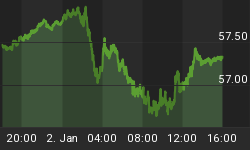Japan’s Toyota Motor Corp released on Friday the first images of its completely revamped hydrogen-powered zero-emission fuel cell electric vehicle Mirai, aiming to take on battery-powered vehicles like the ones Tesla is selling.
The next-generation Mirai, which will be previewed at the Tokyo Motor Show between October 24 and November 4, will feature a fully redesigned fuel cell system, including the fuel cell stack, that delivers substantially improved performance, Toyota said in its latest attempt to spur demand for fuel cell electric vehicles (FCEVs).
The redesigned fuel cell system using hydrogen as fuel targets a 30-percent increase in driving range compared to the current-generation Mirai model, due to increased hydrogen storage capacity, among other measures, Toyota said.
Toyota—which launched a mass-produced fuel cell sedan, the Mirai, in December 2014—has had plans to expand its FCEV product range and continues to seek to bring cost down. The carmaker has been also experimenting with solar-powered cars.
The new-generation Mirai is scheduled for launch starting in late 2020, initially, in Japan, North America, and Europe, the Japanese carmaker said.
“I want customers to say 'I chose the Mirai because I simply wanted this car, and it just happens to be an FCEV.' We will continue our development work focusing on that feeling, and we hope that with the new Mirai we will be a leader in helping to realize a hydrogen energy society,” Yoshikazu Tanaka, Chief Engineer of the Mirai, said in a statement.
Despite efforts to spur demand for hydrogen-powered cars, since its launch in 2014, the Mirai has sold some 10,000 cars globally.
In comparison, Tesla has just said that it achieved a record number of around 97,000 deliveries in the third quarter of this year, just short of an unofficial target that Elon Musk had set to deliver 100,000 electric cars in Q3. In its production and deliveries update on October 2, Tesla said that “we achieved record net orders in Q3 and are entering Q4 with an increase in our order backlog.”

















